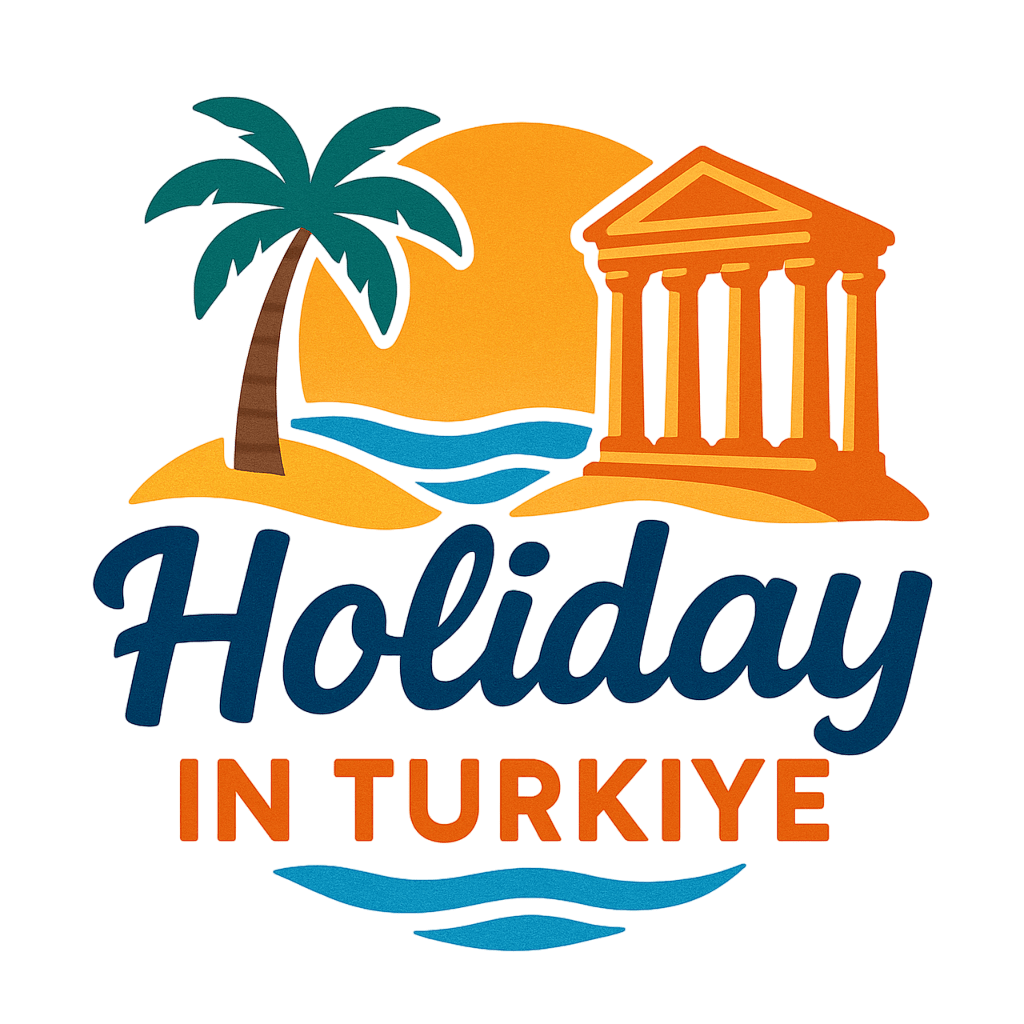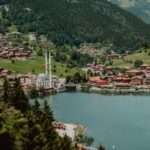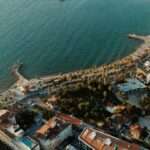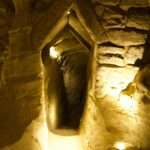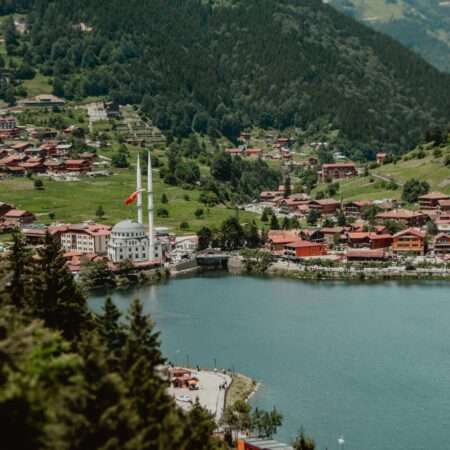Göreme Open-Air Museum is one of Cappadocia’s most iconic sites — a UNESCO World Heritage area showcasing rock-cut churches, frescoes, and monastic complexes dating back to the Byzantine era. Visiting this open-air museum offers a fascinating glimpse into early Christian life amid surreal landscapes. In this 2025 guide, we’ll highlight the must-see churches, share practical visitor tips, and help you make the most of your time exploring this historic treasure.
In this 2025 guide, we’ll cover everything you need to know before visiting the Göreme Open-Air Museum: what to see, when to go, ticket info, photography rules, hidden gems, and insider tips.
🏛️ What Is the Göreme Open-Air Museum?
The Göreme Open-Air Museum is a monastic complex consisting of dozens of rock-cut churches, living quarters, and refectories carved into the soft volcanic rock by Christian monks between the 10th and 12th centuries.
This site served as a major religious center during the Byzantine period, and many of the churches still showcase stunning frescoes that depict biblical scenes, saints, and religious symbols.
It has been recognized by UNESCO since 1985 for its exceptional preservation and cultural value.
🗺️ How to Get There
- From Göreme: It’s a 15-minute walk or a 3-minute taxi ride. You can also rent a bike or electric scooter.
- From Uçhisar or Ürgüp: 10–15 minutes by car or local bus.
- Tours: Most regional tours include a stop at the museum. Look for the “Red Tour.”
Coordinates: 38.6430° N, 34.8356° E
🎫 Tickets and Opening Hours (2025)
- General Admission: 480₺ (approx. $15)
- Dark Church (Karanlık Kilise): Additional 130₺ (~$4), but highly recommended!
- Museum Pass Türkiye: Accepted
- Opening Hours:
- Summer: 08:00–19:00
- Winter: 08:00–17:00
- Last Entry: 30 minutes before closing
- Closed: Open every day, year-round
Buy tickets: On-site or online via muze.gov.tr
🏰 Main Highlights of the Museum
Here are the must-see churches and sections within the complex:
1. Nunnery Monastery (Rahibeler Manastırı)
A multi-level rock monastery with kitchens, dining areas, and small prayer rooms. It gives insight into the communal lives of female monks.
2. Chapel of St. Basil (Aziz Basil Şapeli)
Located near the entrance, this chapel has simple but symbolic frescoes of St. George and St. Theodore slaying dragons.
3. Apple Church (Elmalı Kilise)
Famous for its domed ceiling and vivid frescoes, including depictions of Christ Pantocrator and the Last Supper.
4. Snake Church (Yılanlı Kilise)
Named after a fresco showing St. George fighting a serpent, this small chapel is rich in mythological Christian imagery.
5. Dark Church (Karanlık Kilise)
This is the museum’s crown jewel. Due to limited light exposure, its 11th-century frescoes are in astonishing condition. Scenes include the Betrayal of Judas, Crucifixion, and Resurrection.
Tip: Entry is extra, but worth every penny for art and history lovers.
6. Sandals Church (Çarıklı Kilise)
Named after two footprints carved into the floor, this church has detailed depictions of Christ’s life and other biblical scenes.
7. Buckled Church (Tokalı Kilise)
Technically located just outside the museum complex, but included with your ticket. This is the largest church in Göreme and showcases early Byzantine artwork in red-ochre pigments.
🖼️ The Frescoes: A Window Into the Past
The murals inside the churches illustrate key biblical events:
- Nativity and Baptism of Christ
- Miracles and Healing Scenes
- Last Supper and Crucifixion
- Saint portraits with Greek inscriptions
Despite being over 1,000 years old, the frescoes remain strikingly vivid—thanks to volcanic rock that preserved the pigments.
📸 Photography Tips
- Flash photography is strictly prohibited to protect the delicate paintings.
- Tripods are not allowed inside churches.
- The best light is during mid-morning or just before sunset.
- Capture wide-angle shots of the monastery complex from the entrance terrace.
Insider Tip: The panoramic viewpoint near the museum entrance is one of the best spots to photograph Göreme’s landscape.
🕰️ Best Time to Visit
- Early morning (8:00–9:30 AM) – Fewest crowds
- Late afternoon (16:00–17:00 PM) – Golden hour light
- Avoid peak noon hours, especially in summer.
Best season:
- Spring (April–June) and Autumn (September–October) for mild weather and fewer crowds.
🔎 Insider Tips for Your Visit
- Wear shoes with grip – paths can be steep and dusty.
- Hire a licensed guide or rent an audio guide for deeper understanding.
- Don’t miss the small museums and shops near the exit.
- Use Museum Pass Türkiye if visiting multiple heritage sites in Türkiye.
🍽️ Nearby Cafes and Restaurants
- Seten Anatolian Cuisine – Traditional dishes, 5-min walk
- Topdeck Cave Restaurant – Cozy and authentic
- Pumpkin Göreme Restaurant – Vegetarian-friendly and atmospheric
🧭 Combine with These Nearby Attractions
- Zemi Valley Trailhead – Just 2 km away
- Love Valley Viewpoint – 10-minute drive
- Uçhisar Castle – For sweeping panoramic views
- Avanos pottery workshops – 20-minute drive
🏨 Where to Stay Nearby
- Kelebek Special Cave Hotel – Walkable to the museum
- Sultan Cave Suites – Great for balloon views
- Aydinli Cave Hotel – Mid-range cave comfort
See full accommodation breakdown:
👉 Where to Stay in Cappadocia (2025 Guide)
🧳 Ideal for These Types of Travelers
- 🎒 Solo travelers: Easy to explore independently
- 👪 Families: Safe and educational
- 💑 Couples: Romantic history-rich spot
- 🏛️ Culture buffs: Unmissable religious art & history
🧠 Historical Context: Why It Matters
Cappadocia was a Christian refuge during Roman persecution. The region’s volcanic rock made it easy to carve homes, churches, and entire cities underground. The Göreme Open-Air Museum showcases how early Christians lived, worshipped, and survived here.
